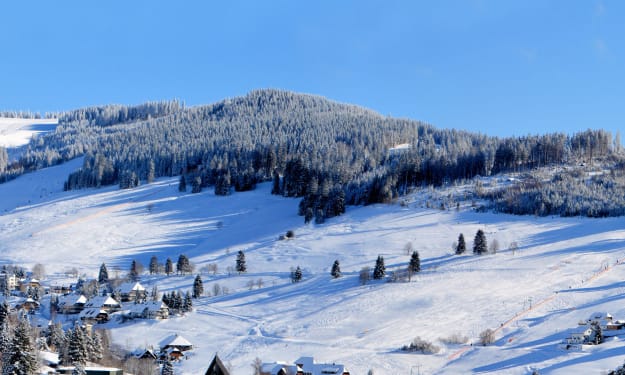Making Yeast at Home -- Never Run Out Again
Yeast is very easy to make, just capture it from the air.

After my mother passed away my dad took up baking. No bread maker for him, he made bread like his mother had done in her day, from scratch.
I have fond memories of dropping into his place early in the morning for coffee. On the right day, I’d walk into the aroma of freshly baked bread, one of which would usually end up coming home with me. Dad never made just one loaf.
Bread is a life staple stretching back to our earliest times. As long as there has been grains to grind into flour, there has been bread to bake. The difference between a baked hunk of flour and water or a loaf of bread, yeast.
What is Yeast?
Yeast creates the action causing the loaf to rise, creating those lovely pockets of air and enriches the flavour. Yeast also works its magic to create wine and beer. In its simplest form, yeast is a single microscopic cell organism, a fungus. It’s naturally occurring, it can be found floating in the air. For it to grow, it converts its food into alcohol and carbon dioxide.
Capturing and cultivating yeast into a leavening agent for bread is known to have started with the ancient Egyptians some 5,000 years ago. Then as now, all that was needed was the right environment to capture and multiply yeast. Food with enough sugar or starch and a warm, nurturing temperature (about 70-85F).
Most people think of yeast as something you need to buy from the store. We tend to forget yeast has been with us forever and no matter what modern production methods has done, it hasn’t gained exclusive access to producing yeast. You can still make your own. It just takes some time. Something we have a lot more of these days as we isolate at home.

Types of Yeast for Breadmaking
During this COVID-19 pandemic some people have had difficulty finding yeast in the stores. Seems people with time on their hands are taking to baking their own bread. It is definitely healthier than most of the commercial breads.
Wild yeast can be cultivated at home using simple ingredients. Once cultivated, you can dehydrate it into dry yeast if you wish or just use the the starter to make your own breads.
There are three main ways to make yeast:
- - using fruits dried or fresh
- - using potato water
- - using other ingredients like flour or old bread
Making yeast is not an exact science. You can learn the basic ideas of how to make it, but you’ll find it’s not foolproof. If you’ve followed the basic recipe and it didn’t turn out, it’s likely something in the ingredients. Experimenting is okay. It’s how cooks have developed their abilities over the years.
Remember: It’s important to keep your yeast mixtures in a warm place. Not hot, but warm. Similar to the warmth you’d provide the dough when it’s being left to rise.
Using Fruits, Dried or Fresh
One word of caution to start. While the world is fighting this pandemic, you should be extremely cautious about using fresh fruit to make yeast. Fresh fruit is best used unwashed and unwaxed. If you’ve not grown the fruit yourself, best to leave using fresh fruit until this virus has been beaten.
Any dried fruit will produce yeast. Some will work better than others, experiment to find what works for you. It doesn’t use up much of your supplies to create yeast.
Dried fruit: grapes, raisins, prunes, apricots etc
Dates work really well. The powdery stuff that you get on your fingers when you rub them is yeast.
Chlorine in your water supply will hurt the yeast production. If you are on municipal water, you may want to use bottled spring water.
- Place fruit in jar
- Add 2-3 tablespoons (30-40ml) water
- Stir the fruit around — take note the water gets cloudy. That’s the yeast
- Add an equal amount of flour — enough to make a loose, wet dough
- Flour doesn’t have to be fresh, organic, or high gluten. Any flour can be used.
- Place the mixture in a warm place.
- In about 12 hours you’ll see bubbles, let them grow.
- In about 24-48 hours the flour paste will loosen up
- Take a small amount of the mixture and add it to 2-3tbsp of water. The bubbles should popup much faster, the yeast has come to life.
If doesn’t work the first time, try again with something else.
The video below shares another approach to using fruit to create yeast:
When you’re making your bread, you can remove the fruit from the yeast mixture or leave it in.
Using Potato Water
Potato water doesn’t work as quickly as using dried fruit but in a pinch if you have potatoes in the house, you have a way of making yeast to make your bread.
This method needs only potato water, flour and sugar.
- Boil your potatoes and save the water.
- Into 1.5cups of the potato water stir 1 tablespoon of sugar and a cup of flour.
- Cover and leave this mixture in a warm place overnight. The next morning it should be bubbly and smell like yeast.
Using Other Ingredients
Other ingredients you can use to create yeast:
- - old bread
- - breadcrumbs
- - ale
- - dregs from a bottle of wine
You can create the yeast with the above ingredients following the mixing pattern with the dried fruit.

Using the Yeast You’ve Created
Unless you dry and store the yeast you’ve created, what you have is a starter. Starters need to be fed to keep them active and growing. Feeding is adding a cup each of water and flour to the yeast mix. This needs to be done daily if kept at room temperature. If you refrigerate your starter then the feeding can be done once a week.
If you’re not regularly making bread, you’ll need to remove and dispose of a cup of the starter when you feed it to keep your ratios in balance.
Now comes the tough part. How much to use when making your bread.
To start to learn how to use the yeast starter, use a basic bread recipe with minimal ingredients to reduce the variables. Start by replacing one cup of your liquid with one cup of starter.
One of the differences your homemade yeast will make on your bread recipe is the time it will take to bake. Keep a check during the last 15 minutes or so on your loaf until you get a sense of how much time you need.
As I said earlier, making your yeast and bread is not an exact science. Methods can also vary. You might find another method is more comfortable for you.
Here are some resources you might find helpful:
Article: Biologist is Surprised to See Yeast Being Hoarded, Decides to Teach People How to Make it at Home
This article sparked me to write this post. Well that and my friends writing about starting from scratch on creating her gardens. One of them had their own worms creating rich soil.
Article: How to Easily Make Your Own Yeast From Scratch
This article is on a site geared to off the grid living. Some very practical suggestions in the article.
Article: Make Your Own Yeast
This article has some excellent information. You may want to explore this site The Survival Mom. It has some interesting ideas for making less do more.
Site: The Fresh Loaf
Having made the plunge into making your own yeast, you may want to explore more about baking bread and the range of breads you can produce. This site is focused on the subject.
--------------------
Hope you found this article helpful. I can also be found as ShadowsPub on other sites like Hive, UpTrennd, Medium and Pinterest
About the Creator
ShadowsPub
ShadowsPub is a Canadian writer who writes on a variety of subjects as she explores her way through the world. She enjoys creating books like journals, notebooks, coloring books etc where she can use her creative skills.






Comments
There are no comments for this story
Be the first to respond and start the conversation.